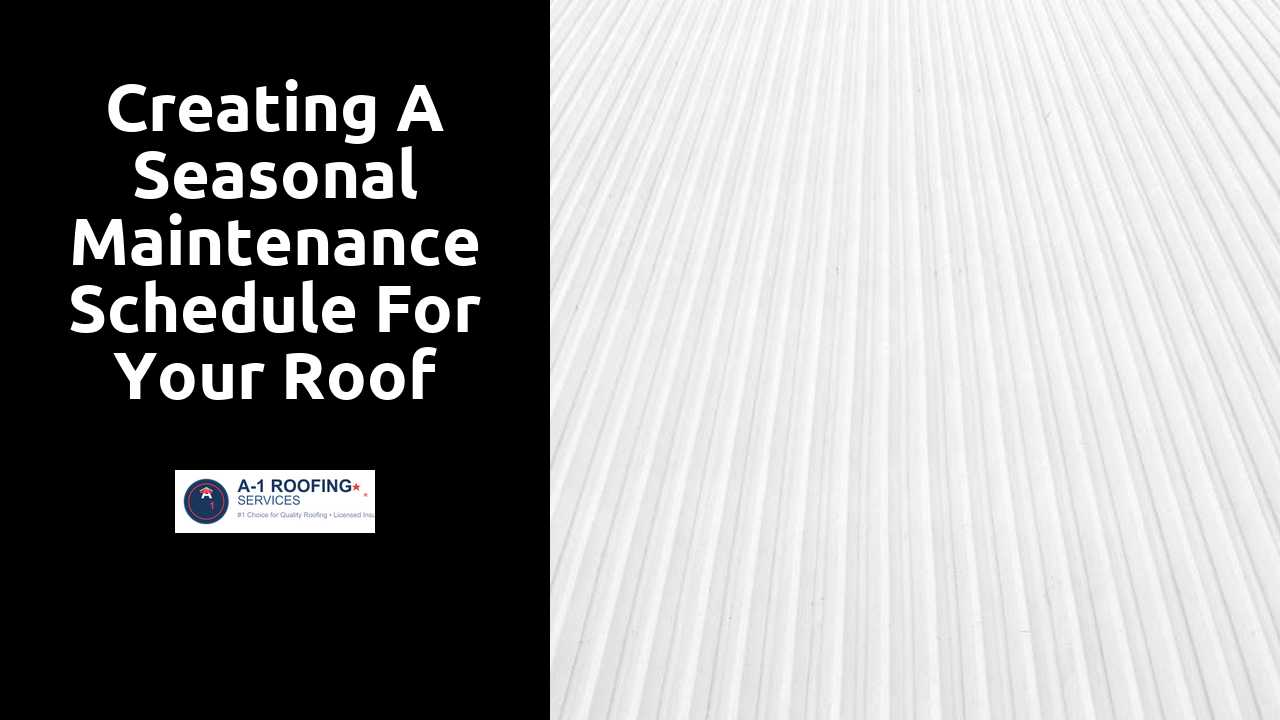
Creating a Seasonal Maintenance Schedule for Your Roof
Table Of Contents
Winterization Strategies for Your Roof
Preparing your roof for winter involves several vital steps to enhance its durability during the harsh conditions. Begin by clearing debris, such as leaves and branches, from the roof surface and gutters. This prevents blockages that can lead to water backup and ice dam formation. Inspect shingles and other materials for signs of wear or damage. Replace any missing or broken shingles to ensure your roof remains watertight.
Additionally, consider insulation and ventilation as key components in winterizing your roof. Proper insulation helps maintain a consistent temperature, reducing the likelihood of ice dams. Ensure that your attic is well-ventilated to allow moist air to escape, which can contribute to ice build-up on the roof. Implementing these strategies not only protects your roof from winter weather but also prolongs its lifespan.
View this external resource for great tips and advice.
Protecting Against Ice Dams and Snow Build-Up
Ice dams can pose significant risks during the winter months, leading to potential water damage and structural issues. To prevent their formation, it's essential to ensure your roof has proper insulation and ventilation. This helps maintain a consistent temperature, reducing the likelihood of melting snow that would refreeze at the eaves. Additionally, clearing snow accumulation promptly can lessen the chances of ice forming, as accumulated snow is a primary contributor to dam formations.
Regular maintenance becomes crucial as temperatures fluctuate. Inspecting gutters and downspouts for blockages ensures that melting snow can drain properly. A well-maintained drainage system can help mitigate the risk of ice buildup on your roof. Furthermore, considering the installation of heat cables along the eaves may provide an added layer of protection against ice dams by keeping critical areas warm enough to prevent freezing. These proactive measures can help safeguard your home from the detrimental effects of winter weather.
Identifying Common Roof Problems
Roof problems can arise from various factors, including age, weather conditions, and lack of maintenance. Common issues often include missing or damaged shingles, leaks, and sagging areas. Homeowners should inspect their roofs regularly for signs of wear and tear. Stains on interior ceilings or walls might indicate underlying leaks, which require immediate attention to prevent further damage.
Debris accumulation can also lead to many roofing issues, such as clogged gutters and inadequate drainage. Moss or lichen growth is another concern, as these can trap moisture against the roof surface and promote decay. Identifying these problems early can save homeowners time and money. Regular inspections and awareness of potential warning signs play a crucial role in maintaining the integrity of a roof.
Signs You Need Professional Help
A consistently damp attic or the presence of mold and mildew can indicate underlying issues with your roof. These problems often stem from leaks or inadequate ventilation, which require immediate attention. If you notice dark spots or stains on interior ceilings and walls, these can be signs of water intrusion. Ignoring these signs can lead to extensive damage to both your roof and home structure.
Visible sagging or buckling in the roof itself should raise immediate concerns. Such deformities often signify structural compromise, which can escalate into costly repairs if not addressed promptly. Additionally, if shingles are missing, cracked, or curling, these are clear indicators that your roof may need professional evaluation. Regular inspections are crucial, but it's vital to act quickly once any of these warning signs are detected.
DIY vs. Professional Maintenance
Homeowners often consider tackling roof maintenance themselves as a way to save money. Basic tasks like cleaning gutters or checking for loose shingles can be manageable with the right tools and safety precautions. However, some maintenance activities require more specialized skills and knowledge. Understanding one’s limitations is crucial to prevent potential damage or injury.
In certain scenarios, enlisting the help of professionals becomes necessary. Experts can identify underlying problems that may go unnoticed by an untrained eye. They bring experience and access to specialized equipment, ensuring that issues are appropriately addressed. While hiring professionals may involve a higher initial cost, it can lead to long-term savings by preventing significant repairs down the line.
When to Call in the Experts
Regular inspections can often reveal minor issues that homeowners can address themselves. However, some situations are best left to professionals. If you encounter excessive water damage, sagging areas, or significant leaks, it’s a good idea to seek expert assistance. Professionals possess the tools and knowledge to diagnose complex issues that might not be immediately visible to the untrained eye.
Safety concerns should also be a priority. Working on a roof involves risks, particularly when heights and weather conditions are unpredictable. If you feel uneasy about climbing up to examine your roof or performing repairs, calling in experienced contractors will not only ensure a job well done but also protect your well-being. They can provide certified evaluations to assist in maintaining the overall integrity of your home.
Related Links
Best Tools for Effective Roof Preventative MaintenanceHow to Spot Early Signs of Roof Deterioration